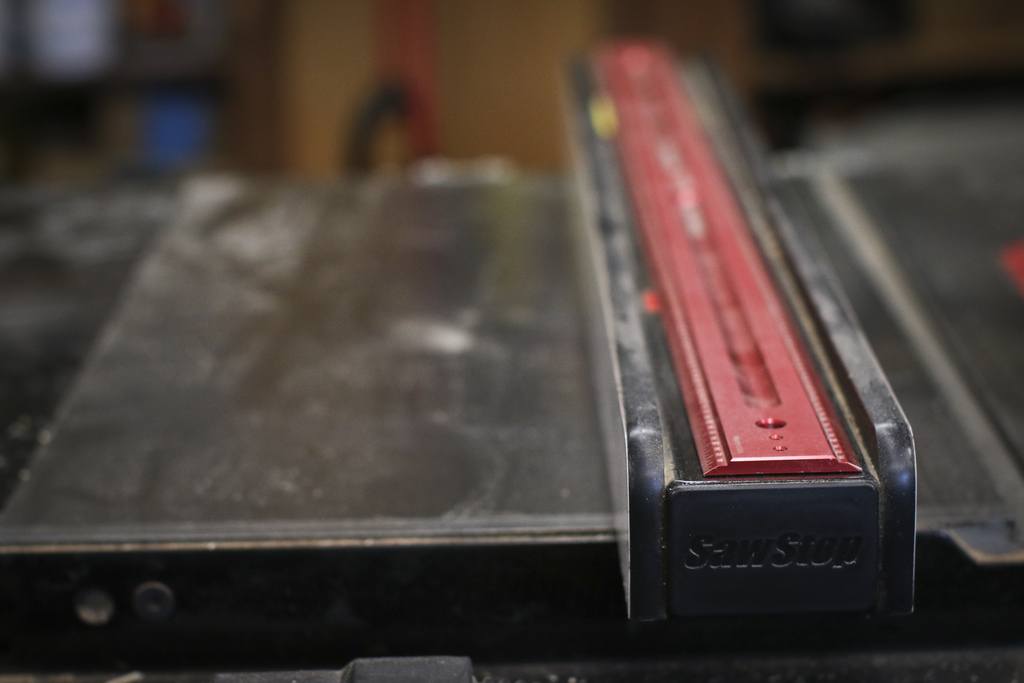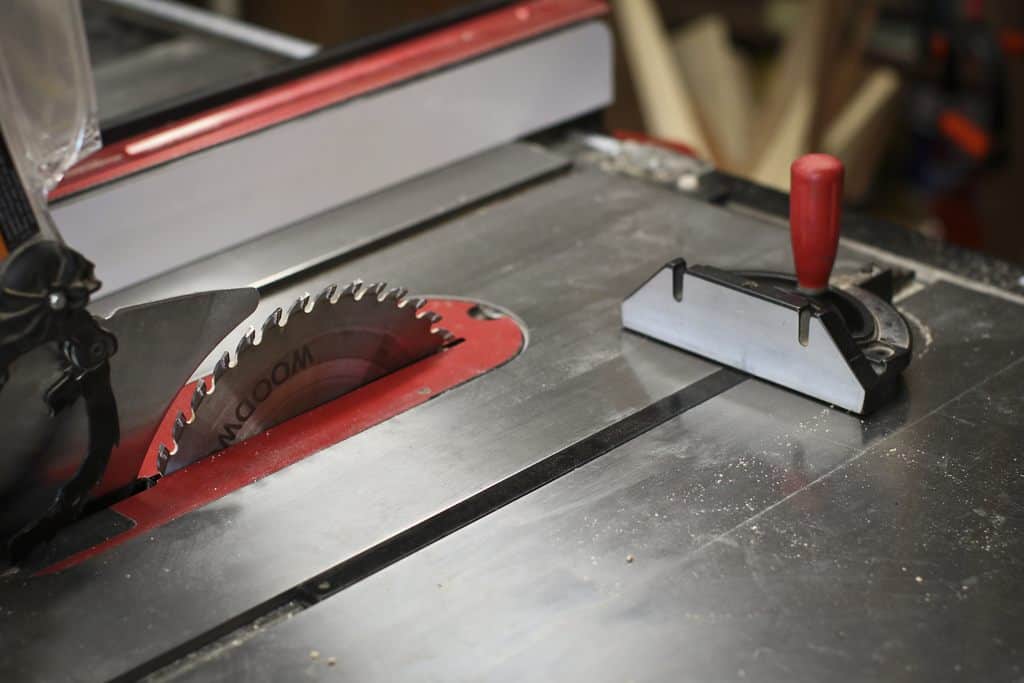As an Amazon Associate we earn from qualifying purchases.
Leveraging my expertise as an experienced woodworker, I’ll clearly explain what rip capacity is on a table saw and its importance. Even if you’re a beginner, you’ll grasp this key concept with ease. Let’s jump right in.
Contents
What is Rip Capacity on a Table Saw?
Rip capacity is the maximum width a table saw can cut, measured as the distance between the blade and the extended fence. It’s a key determinant of a saw’s versatility. It is the longest length of wood that the table saw can perform a rip cut on.
Common Table Saw Rip Capacities
The three most common rip capacities are:
- 28 inches: the entry level rip capacity for most cheap and mid-priced table saws. This allows you to rip a standard 48″ of plywood in half.
- 30 inches: the perfect capacity for most woodworkers, this size will handle the majority of your cuts. Although, you will probably end up with the occasional 36″ that you won’t be able to make.
- 50 inches: the largest of all sizes, only the biggest and best table saws will have this capacity. However, the vast majority of cuts will never require a capacity this large. However, you can do additional things with it, such as install a torsion box router table.
As an example, if you buy a piece of plywood that’s 48 by 96 inches and your saw’s rip capacity is 28 inches, you can cut it into two 24 by 96-inch pieces.
Table saws come in various types, each with a different rip capacity. The three main types are benchtop, contractor, and cabinet table saws.

- Benchtop saws: known for their portability and suitability for smaller spaces, usually offer a rip capacity of 28 inches, extendable to 48 inches with additional extenders. Despite their compact size, they can handle wide cuts of medium-density fiberboard (MDF), provided the material is smoothly run through the blade.
- Contractor table saws: typically built with a larger rip capacity of 30 inches, expandable by 10-20 inches with extenders. Their design caters to professional contractors who require increased capacity for their work.
- Cabinet table saws: provide the highest rip capacity, typically around 50 inches, as they’re designed for heavy-duty and frequent usage. However, their size requires ample workshop space. Unless you’re engaged in commercial woodworking or metalworking, you might not need the substantial power and size of a cabinet table saw.
In my experience, the rip capacity is not strictly limited by the table size, as material width can sometimes exceed the table’s capacity. Nevertheless, understanding your requirements and choosing the right table saw can significantly enhance your woodworking experience.
Clearing the Confusion about Rip Capacity
Several different specs and features apply to table saws, including rip capacity. However, the biggest factor affecting the price for many table saws is the rip capacity. Because rip capacity affects the cost, it’s an important measurement.
When you make your selection of the table saw, you want to choose the smallest rip capacity based on your needs to get the best value. Smaller portable table saws typically will have a shorter rip capacity than larger, cabinet table saws.
Another key factor that is important for table saws is their depth capacity. This is how deep into the wood the saw can cut. Another way to think about it is how thick of wood the saw can cut.
Generally, a 10″ table saw blade can cut wood that is roughly 3″ thick, and a 12″ blade can cut wood that is 4″ thick.

How to Extend Your Rip Capacity
While rip capacity is an important measure, there are ways to expand the rip capacity of any table saw. For starters, before you consider extending your rip capacity, make sure you know all of the safety features and procedures for this dangerous saw.
In essence, you can have unlimited rip capacity for both length and width. Just remove the fence. But, it will be nearly impossible to keep a straight line. You can mark a straight line and follow it as you cut.
There are several options for ripping large pieces of wood. Here are a few more ways you can rip large pieces of material with a table saw:
- Have other people help you
- Use larger tables
- Build a fence clamping system
How Much Rip Capacity Do I Need on a Table Saw?
28″ is the minimum rip capacity on most entry level table saws, while 30″ is the most common rip capacity. You can accomplish most rip cuts with a 28″ rip capacity.
The type of projects you plan to work on is the main aspect that determines how much rip capacity you need.
For example, let’s say you want to use your table saw for large-scale construction projects, like frames, fences, or decks. In that case, you want a rip capacity somewhere near 24 inches, since standard sheets of oriented strand board (OSB) and plywood measure 8 feet long by 4 feet wide.
Perhaps you want to work on smaller projects, like cabinetry and furniture. You can accomplish this kind of work with a table saw with a capacity of 22 inches or less.
Since rip capacity is a major factor in the price of a table saw, you’ll want to choose the smallest table saw that will meet the needs of your projects.
Conclusion
Different projects and cuts require different rip capacities. If you’re still a beginner, chances are you can opt for a cheaper table saw that does not have as large of a rip capacity. As your projects grow in size and scope, you will need a table saw with a larger rip capacity.

